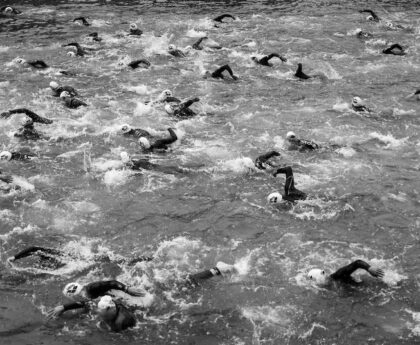Search for Missing Titanic Tourist Submarine Intensifies
Complex Operation Underway
TechnipFMC’s deepsea vessel, the Deep Energy, has joined the search and rescue operation for the missing Titanic tourist submarine. The submarine, which was en route to the Titanic wreckage, vanished with five people aboard, sparking an international search effort. The US Coast Guard and Navy are working tirelessly in this complex operation to locate the submarine and its occupants.
TechnipFMC‘s Involvement
The Deep Energy vessel, which has been in service for around a decade, has the necessary capabilities to conduct search operations at great depths. It can install various types of pipes and umbilicals at depths of approximately 9,800 feet. Equipped with remotely operated vehicles (ROVs) and additional features like a maximum speed of 19.5 knots, cranage, and deck winches, the vessel is well-suited for this operation.
Underwater Noises Detected
An important development in the search effort came when underwater noises were detected in the search area for the submarine. Canadian P-3 aircraft picked up these sounds, prompting a relocation of underwater operations to investigate their origin. The search is ongoing, and the data from the P-3 aircraft has been shared with US Navy experts for further analysis and consideration in future search plans.
Transition from Rescue to Recovery Operation
The missing submarine‘s oxygen reserves are dwindling rapidly, with less than 40 hours of breathable air remaining as of Tuesday evening. When its dive began, the vessel had around 96 hours of oxygen onboard. However, even once those hours are up, the transition from a search-and-rescue mission to a recovery operation will not be immediate.
Several factors could prolong the search efforts, including the possibility of locating the submarine in time and the need to retrieve any valuable evidence or information from the wreckage. The decision to transition will be made based on a careful assessment of all available information and resources.
International Attention and Concern
The missing Titanic tourist submarine has captured the attention of the international community, leading to widespread concern about the fate of those on board. News of the search operation, along with updates on any developments, has been closely followed by people around the world.
Providing Support and Updates
TechnipFMC has pledged to work closely with the United States Coast Guard, who are leading the search effort, and will provide further information as it becomes available. It is crucial for the public to stay informed about the progress of the operation and any potential breakthroughs.
Lessons from Tragedies
This unfortunate incident brings to mind the enduring fascination with the Titanic and the tragedies that have befallen those who have ventured to explore its wreckage. It underscores the inherent risks associated with deep-sea exploration and the need for careful planning and preparation.
As humans continue to push the boundaries of exploration and discovery, it is essential that safety and risk mitigation remain paramount. While the search for the missing submarine continues, it serves as a reminder of the challenges and dangers that accompany our quest for knowledge.
Advice for Deep-Sea Exploration
Prioritize Safety Measures
Deep-sea exploration, though captivating and filled with the potential for incredible discoveries, should never compromise the safety of those involved. It is crucial for all individuals and organizations involved to prioritize safety measures and adhere to established guidelines and protocols.
Thorough Risk Assessment
Before embarking on any deep-sea exploration mission, a thorough risk assessment should be conducted. This assessment should identify potential hazards, determine appropriate safety measures, and ensure that all necessary equipment and expertise are available.
Robust Emergency Response Plans
Deep-sea missions should have robust emergency response plans in place to address unforeseen circumstances. These plans should include contingency measures for search and rescue operations, as well as clear protocols for transitioning to recovery operations when necessary.
Collaboration and Communication
Collaboration and effective communication between all stakeholders involved in deep-sea exploration are crucial for the success of any mission. Open and transparent sharing of information ensures a coordinated effort and allows for timely decision-making.
Learning from Tragedies
Tragic incidents like the disappearance of the Titanic tourist submarine serve as reminders of the risks associated with deep-sea exploration. It is essential for the entire exploration community to learn from these incidents and continuously strive to improve safety measures and protocols.
Deep-sea exploration holds the promise of unraveling the mysteries of our oceans and expanding our understanding of the world. By prioritizing safety, conducting thorough risk assessments, and fostering collaboration, we can ensure that future explorations are conducted responsibly and with the utmost care for the well-being of all involved.

<< photo by Caio Silva >>
The image is for illustrative purposes only and does not depict the actual situation.
You might want to read !
- A Deep Dive into the Future: Examining ESPN’s Latest Predictions for all 58 Picks in the 2023 NBA Mock Draft
- “A Deeply Troubling Discovery: Debris from Vanished Submarine Unearthed Near Titanic Relics”
- Exclusive Investigation: John Durham – The Final Bastion of Integrity in the Corridors of Power
- “Billionaire Battle Down Under: Elon Musk Throws Down the Gauntlet to Mark Zuckerberg!”
- “The Curious Case of Cam Whitmore: Unraveling the Mystery Behind his Draft Slide”
- “Sonar Signals Unveil Mysterious Sounds: Canadian Aircraft’s Discovery Adds Intrigue to Search for …”
- Exploring the Depths: Unveiling the Price of OceanGate Expeditions’ Titanic Submarine Tours
- The Devastating Demise: Exploring the Cataclysmic Collapse of the Titan Submersible
- “The Titanic Submersible Disaster: Unraveling the Catastrophic Implosion”




